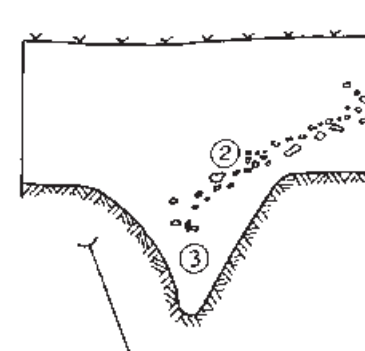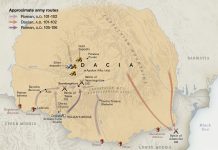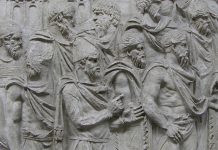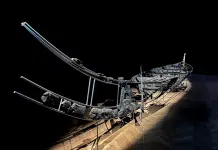Famous Ukrainian archaeologist Boris Mozolevsky who excavated Tovsta Mogyla Kurgan and found the famous Golden Pectoral in it held the view that the ditches encircling Scythian barrows most likely had the same magical meaning as the cromlech. He thought that it was connected with the belief in the magical properties of the circles and that the tradition went back to the Bronze Age period. In his works, B. Mozolevsky did not elaborate on the ditch around Tovsta Mogyla but mentioned that by major parameters it was very similar to the ditch around Alexandropol Royal Kurgan situated in the same area near the Dnieper. Luckily, the latter was rediscovered and investigated anew by the American-Ukrainian Scythian Kurgan Project (AUSKP) team in 2004-2005. In 2004 a full topographical survey utilizing GIS and trial trenching was conducted in the Alexandropol Kurgan in order to determine the borders of the monument’s area. The head of the Project, Dr. N.T. de Grummond provided the detail of the discoveries in the Preliminary Report:
“On the basis of the obtained data, the diameter measurements of the ditch of the Alexandropol kurgan do not exceed 110 m. The center of this roughly circular ditch lies to the north and slightly to the east of the estimated center. Inside seven out of eight excavated trenches, the ditch was discovered, which measured 4.0–4.5 m in width and went 2.0–2.5 m deep into the ground. In several trenches, there was clear evidence of the krepis of roughly worked granite that once formed a foundation encircling and buttressing the base of the mound… The side toward the interior of the kurgan shows a clear right-angled corner, while the outer edge curves in a smooth arc. The termination of the ditch descends to a depth of 2.4 m from the level surface of the materik, with the cut in the form of a vertical wall. Here the cross-section of the ditch is in the form of a trough, with a flat bottom about 1 m wide. Moving toward the south, the ditch displays an inclining section. The sloping walls descend to the bottom at an angle of about 50º.”
Dr. de Grummond mentions B. Mozolevsky when describing details of the funeral feast that took place at Alexandropol Kurgan some 2400 years ago: “It should be noted that by the time that the funeral feast took place the ditch in all the trenches had been filled up to over half its depth with earth eroded from above. The traces of the funeral feast and the collapsed stones from the krepis were deposited in the same layer of the earth in all the sections of the ditch explored. In all other Scythian kurgans where the funeral feast has been uncovered, the same disposition has been observed (Mozolevskii and Polin 2005, Kurgani skifskogo Gerrosa IV v. do n.e., 297–98).
The cromlechs and ditches around Scythian barrows make one wonder if there is a connection between them and the Megalithic stone circles of Britain.










